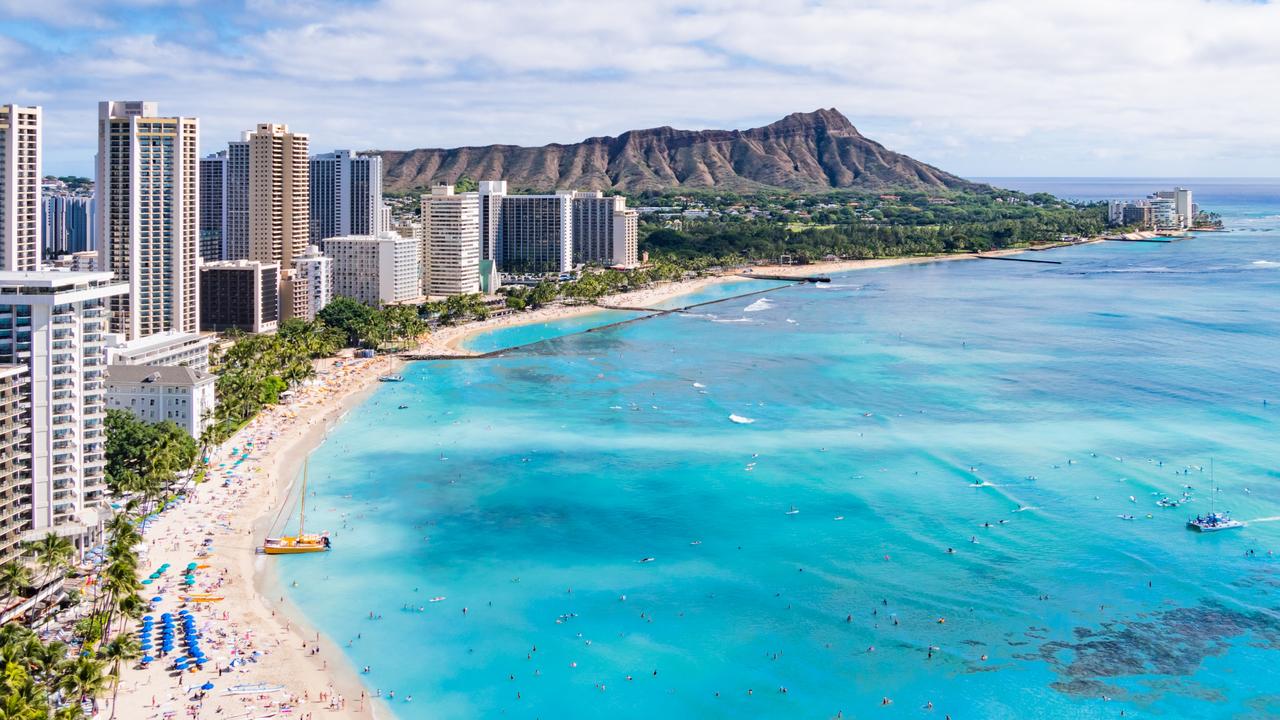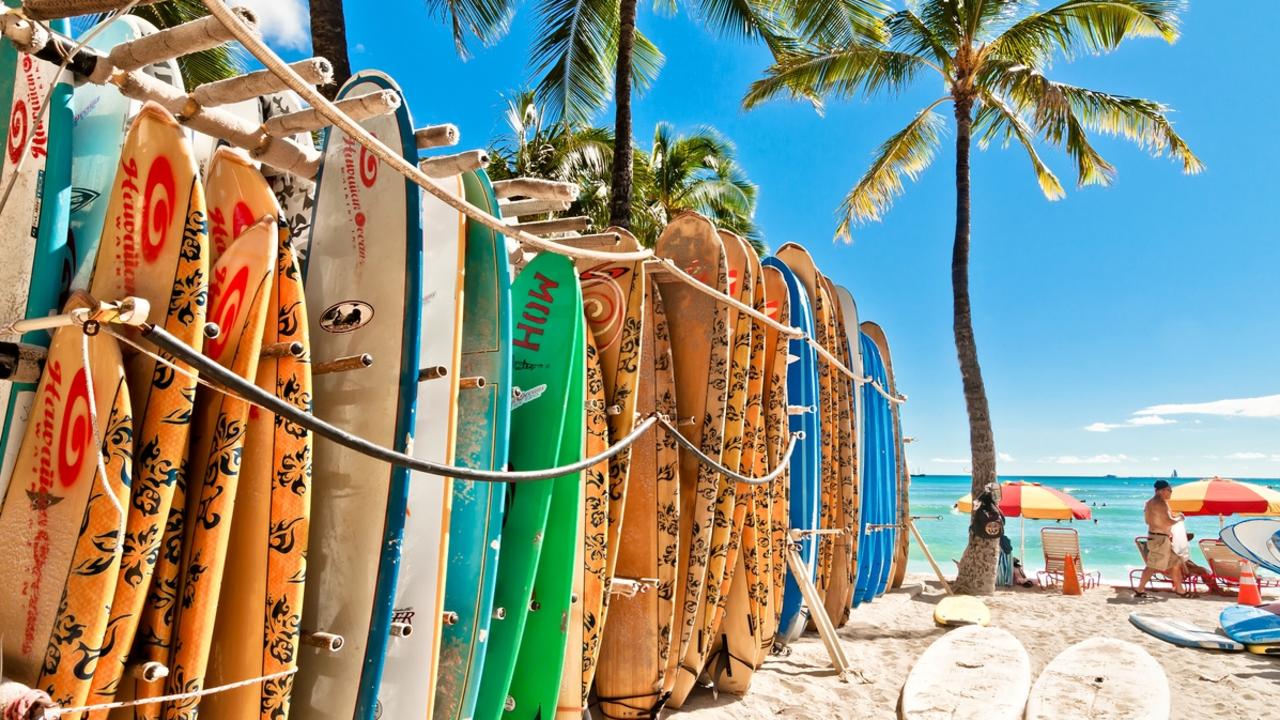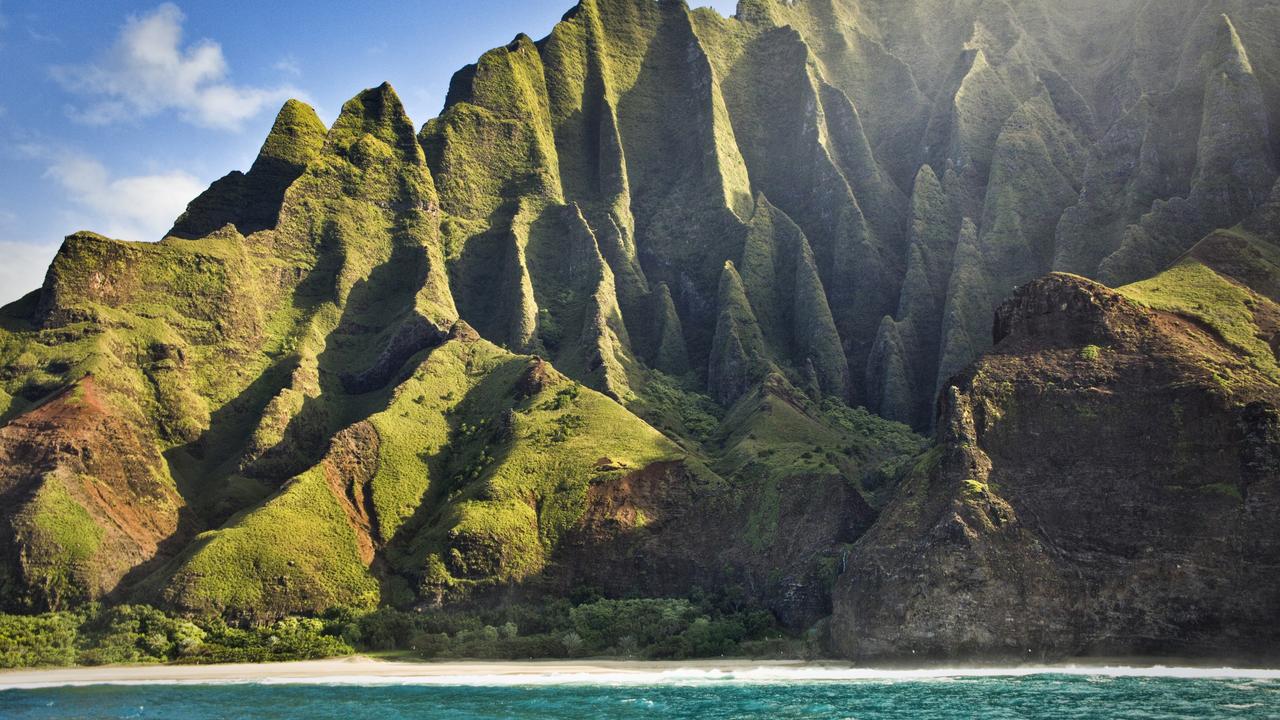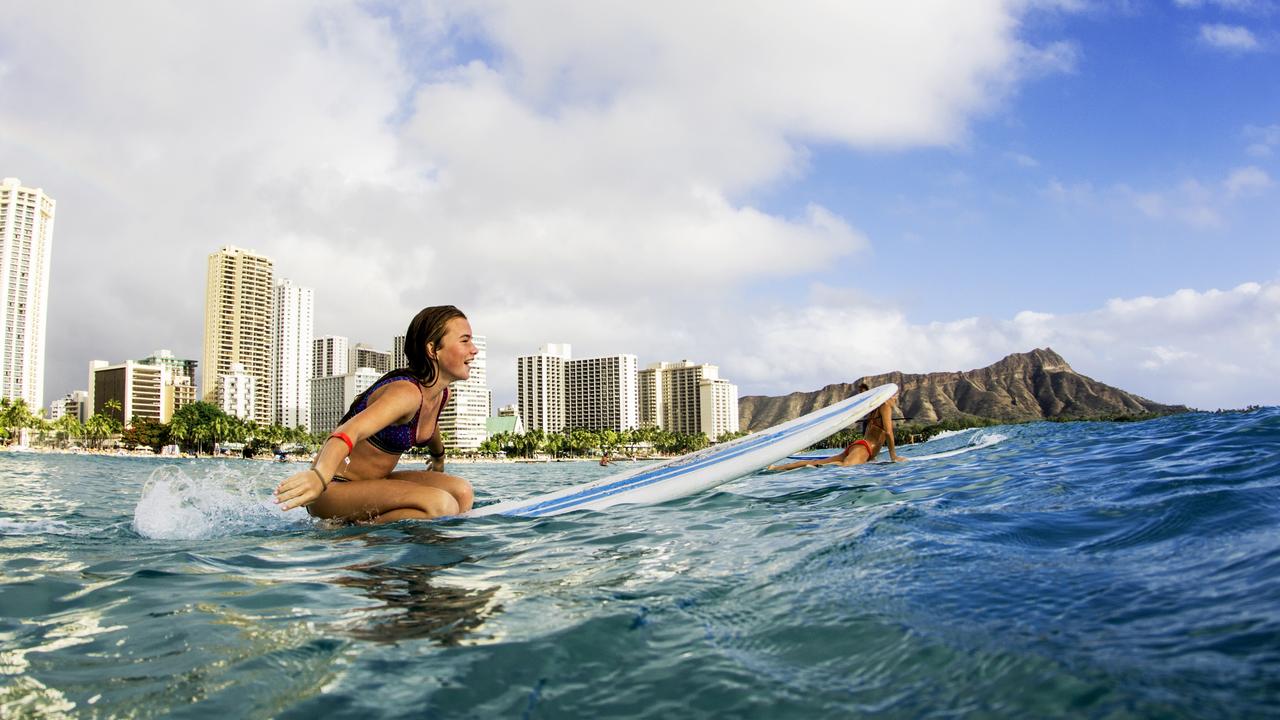The best and worst time to travel to Hawaii
It’s one of our most popular international destinations to visit, but when it comes to visiting Hawaii – there’s certain months you should watch out for.
It’s no secret that Australians love Hawaii as a hub for their holiday.
From beaches to bar hopping, browsing boutiques or venturing up volcanoes – each and every year the tropical islands brings in tens of thousands of Aussies in search of sun, sand and a sneaky cocktail or two.
According to the Hawaii Tourism Authority, a total of 395,362 visitors travelled to Hawaii in 2017 from the Oceania market, with more than 80 per cent of that figure coming from Australia – making the appeal as a holiday destination more apparent than ever.
But as with any holiday – especially one that uses outdoor activities as a major drawcard – knowing when to visit is pretty crucial.

Luckily, the Aloha State is drenched in sunshine most of the year, with the islands lapping up consistently warm temperatures across most months.
Having only two obvious seasons – being summer (kau) and winter (hooilo) – the coolest the island tend to get at sea level is a very pleasant 26 degrees. For this reason, it makes Hawaii one of those few destinations that enjoys visitors year-round – but there are a few key times of the year that prove more popular than at other times.
Summer (which falls between May and October) tends to be the warmest time to visit, with the average daytime temperature lingering around 29 degrees and the water temperature sitting at a very warm 26 degrees.
This tropical island weather means these months have little rainfall, however some afternoons can become a little hot and sticky.

The warmer months come with an added bonus – it’s considered low season on the islands, meaning airfares and hotels at a lower rate.
But be warned – if you are hoping to avoid the crowds – steer clear of June through to August as despite being in the middle of low season, these months coincide with the US summer break and Australian school holidays meaning more people tend to book their getaways.
Instead, look at booking closer to September (shoulder month) when occupancy on the island is lower, as opposed to December and January when Hawaii experiences a surge in visitors.
Oahu is the most popular region of the 350,000 Aussies that visit, because of the world-famous sunsets, shopping malls and of course Waikiki Beach.
But if you’re keen to escape the crowds and the copious amount of high-rises – perhaps look at venturing to the island’s north, east or west or even to the neighbouring islands of Maui, Kauai or the Island of Hawaii.

Unlike other winters around the world, the cooler months in Hawaii means peak season for the island. Despite also being the wetter months, visitors staying between November and April should expect to pay more for flights and hotels, with many Christmas and New Year holiday-makers descending on the islands around December and January.
But one of the big bonuses of travelling during the winter months is the more pleasant weather around 25 degrees and the water sitting at a comfortable 21 degrees.
After mid-April (typically after Easter), most airfare and lodging prices drop again as a result of the “high-demand” period ending. However overall, July continues to be the month with the most visitor arrivals and November is seen as the quietest month.
But while parts of the winter months tend to be the most popular, many believe this time of year is actually the least desirable on the islands thanks to the combination of higher prices, wetter weather and cooler temperatures. The most consistently good weather is usually found in April, May, September, and October.

Another big ticket item for tourists wanting to visit Hawaii is the surf.
So if it’s waves you’re after, look at travelling between November and March, with the biggest waves hitting the north shores of all islands mainly in December and January, and particularly on Oahu’s North Shore.
For the beginners wanting to learn how to ride a wave, the surf is especially calm from May through to September making it a really great time for swimming and snorkelling too.




